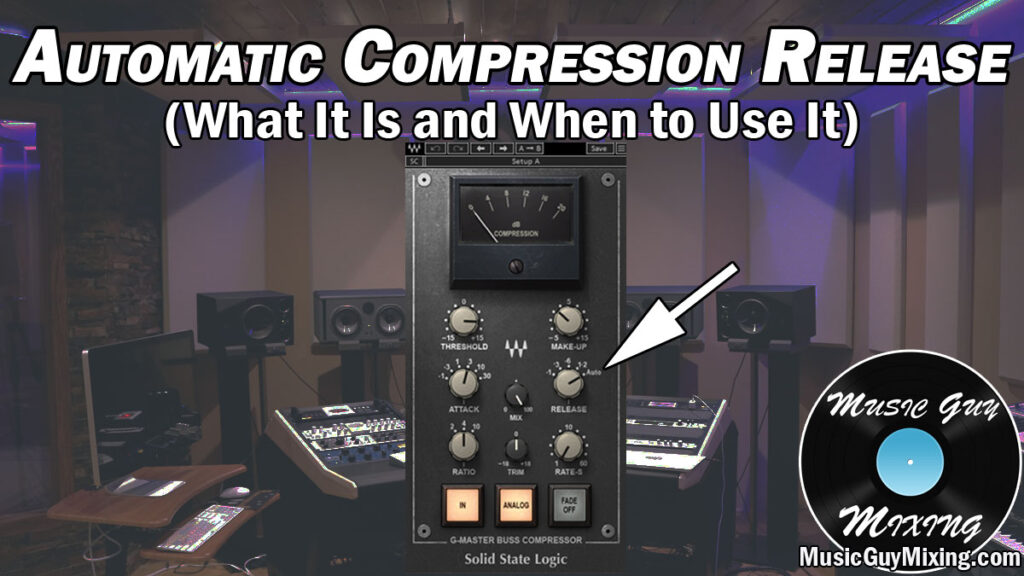I’ve talked at length about the compression settings in the past, including the compressor’s release feature. The release on a compressor dictates how long compression is still applied after the signal drops below the threshold. You can set this anywhere from instant to over a second. There’s typically also an option to set the release to “auto” or “automatic” which isn’t as obvious. Let’s identify what is the automatic compression release and what it does.
Setting a Manual Release Time
The release time on a compressor can yield two very different results at opposite ends, depending on how dynamic your audio is.
Setting a fast release time, typically 50ms or less, means that the compression drops off abruptly.
This keeps your signal relatively dynamic but the speed of the transition can also produce a pumping sound.
In some genres like EDM this can be desirable, but many times you don’t want to hear the compressor working like that.
Setting a slow release time, typically a few hundred milliseconds or more, keeps the signal compressed for longer. This keeps the signal controlled for longer, but it sucks the dynamics and life out of the audio.
Typically the solution would be to find a middle ground for the release time – something between the two to where the signal is controlled without hearing the compression grabbing and releasing the audio.
An alternative is to use automatic compression release.
What Does Automatic Compression Release Do

The automatic compression release reacts to the natural dynamics of your audio to vary the release time depending on what the input signal is doing.
If you’ve got a number of louder peaks, the release will stay relatively quick to keep that signal consistent.
When the signal gets quiet, the release will back off more slowly, eliminating the audible artifacts of the compressor like the aforementioned pumping.
It’s a dynamic way to react to the dynamics of your audio.
Given the reactive nature of this setting, should you ALWAYS use the automatic compression release?
If you’ve got a relatively consistent signal like a bass or even a vocal that you want to keep more upfront, I recommend setting a relatively faster static and manual release time.
Incidentally in my guides to bass guitar compression and vocal compression, I recommend a release time of 50ms as a sweet spot for keeping your audio energetic via compression without hearing it working.
So when SHOULD you use the automatic compression release?
When to Use the Automatic Compression Release
A good general rule is to use the automatic compression release setting when you’ve got a more complicated dynamic signal.
What I mean by this is a track which has a lot of notable peaks and valleys.
When you’re using a glue compressor on a bus, even on your mix bus chain, the automatic compression release works well to react to the dynamic nature of the bus or entire mix and keeps everything sounding natural while yielding the benefits of compression.
Another tip is to simply use the automatic compression release setting when you can’t find a good middle ground between controlling your signal without undesirable pumping.
